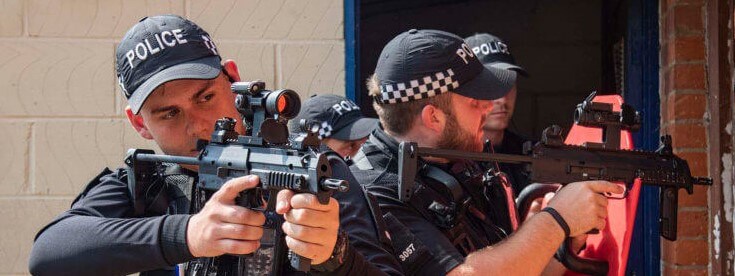For the police and military, weapons training is an essential and valuable skill, but knowing the potential dangers is paramount. Here are the top 5 risks of firearms training to keep in mind:
Accidental Discharge: One of the most severe dangers of firearms training is the possibility of an accidental discharge, which can occur if the shooter is not correctly handling the firearm. This can happen when a shooter is not following proper safety protocols, such as keeping the finger off the trigger until ready to shoot, or if the firearm is not properly maintained. It’s important for trainers to emphasize the importance of safety protocols and for shooters to be familiar with their firearms before handling them.
Eye Injury: Another danger of firearms training is the risk of eye injury. This can occur when a shooter is not wearing proper eye protection or if the eye protection is inadequate for the shooting type. Eye injuries can range from minor irritation to severe damage, such as a detached retina, so wearing proper eye protection during training is essential.
Hearing Loss: Loud noise from firearms can also cause hearing loss. It is crucial to wear ear protection such as ear muffs or ear plugs to protect the ears from the loud noise of gunfire.
Stress and Trauma: Firearms training can also be psychologically stressful for some individuals. For example, being in a simulated combat situation or handling a weapon can trigger memories or feelings related to past traumatic experiences. It’s important for trainers to be aware of this and to be sensitive to the needs of students experiencing stress or trauma during training.
Physical Injury: Repeatedly shooting can cause injuries to the hand, wrist and shoulder, and back problems due to improper positioning during firing. Taking breaks, resting, stretching while training, and maintaining a good posture are essential.
The reality is firearms training can be an essential and valuable skill, but knowing the potential dangers is important. Trainers should emphasize safety protocols and ensure students are familiar with firearms before handling them. It’s also essential to wear proper eye and ear protection and be aware of the potential for psychological stress or trauma. Regularly taking breaks, stretching, and resting is necessary to prevent physical injuries. It is important to remember these dangers to ensure a safe and effective training experience.





